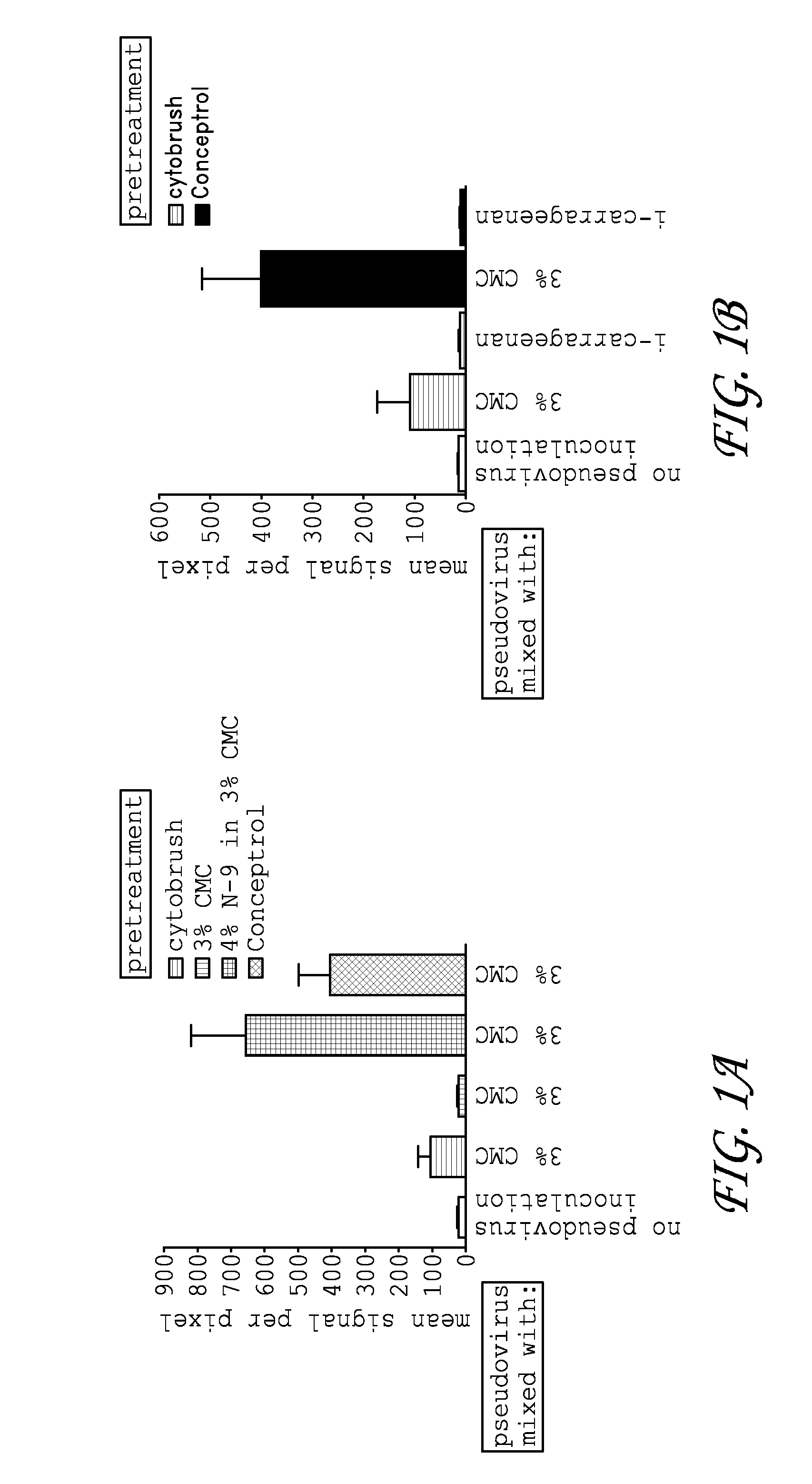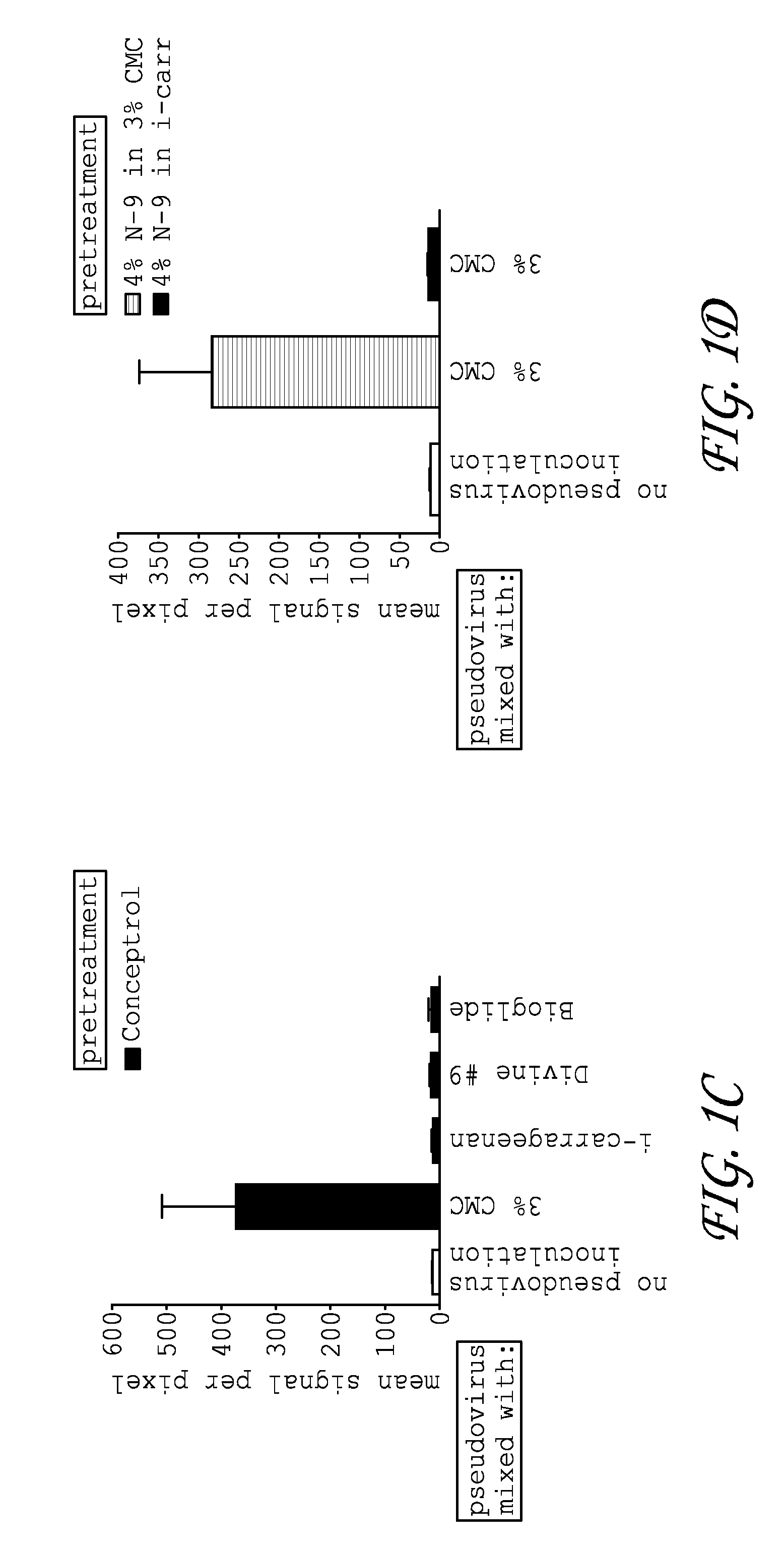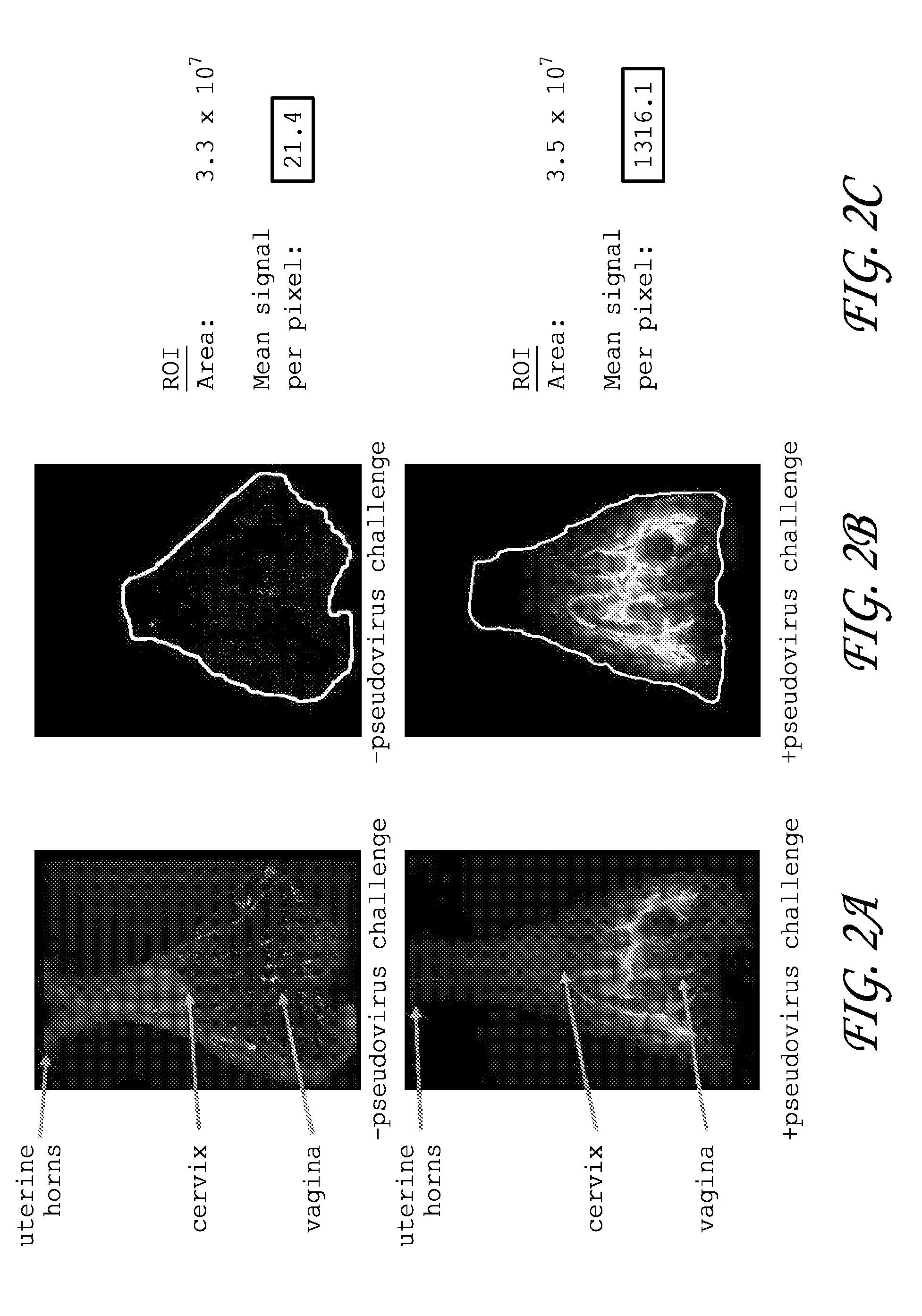Papillomavirus pseudoviruses for detection and therapy of tumors
a pseudovirus and tumor technology, applied in the field of molecular biology and medicine, can solve the problems of cancer, resistance, difficult or impossible to treat the disease, and many forms of cancer remain uncurable, etc., and achieve the effects of fibrosis, cancer, and inability to treat the diseas
- Summary
- Abstract
- Description
- Claims
- Application Information
AI Technical Summary
Problems solved by technology
Method used
Image
Examples
example 1
[0124]Genital Transmission of HPV in a Mouse Model is Potentiated by Nonoxynol-9 and Inhibited by Carrageenan
[0125]A mouse model of cervicovaginal infection with HPV16 that recapitulates the establishment phase of papillomavirus infection was developed as follows.
[0126]Six- to eight-week-old female BALB / cAnNCr mice were obtained from the National Institutes of Health and housed and handled in accordance with their guidelines. Experimental protocols were approved by the National Cancer Institute's Animal Care and Use Committee. Unless otherwise noted, all mice received 3 mg of Depo-Provera (Pfizer) diluted in 100 μl of sterile PBS in a subcutaneous injection 4 d before pseudovirus challenge.
[0127]For vaginal challenge, mice designated for N-9 pretreatment received 50 μl of the N-9 containing compound intravaginally 6 h before intravaginal inoculation with pseudovirus. The material was delivered with an M50 positive-displacement pipette (Gilson), and standard dissecting forceps were u...
example 2
[0129]Genital Transmission of HPV in a Mouse Model is Potentiated by Nonoxynol-9 and Inhibited by Carrageenan
[0130]The ability of pseudoviruses to infect mechanically damaged cells, nonoxynol-9 treated cells, and carrageenan treated cells was investigated. The details of these experiments follows.
[0131]Gentle mechanical abrasion of the genital epithelium with a Cytobrush cell collector permitted detectable levels of pseudovirus infection. Whether chemical disruption of the genital epithelium could promote infection was also determined. N-9 is a nonionic, membrane-active surfactant that is widely used as a spermicide and is known to disrupt the normal architecture of animal and human genital epithelium. A formulation of 3% carboxymethylcellulose (CMC) designated to mimic the viscosity of a typical vaginal lubricant gel was made with or without 4% N-9. The gels were instilled in the vagina 6h before the mice were inoculated intravaginally with pseudovirus. The mice pretreated with CMC...
example 3
[0134]Coupling of Alexa Fluor 488 Dye to Pseudovirions
[0135]Coupling of Alexa Fluor 488 dye to HPV16-RFP pseudovirions was performed according the manufacturer's instructions for protein labeling (A10235, Molecular Probes). The dye-coupled capsids were purified by gel filtration over a column of 2% 50- to 150-μm agarose beads (Agarose Bead Technologies). Re-titering of the dye-conjugated pseudovirion preparation confirmed that its infectivity remained comparable to that of nonlabeled pseudovirus.
[0136]The experiment above shows that labels can be successfully coupled to pseudoviruses and the infectivity of labeled pseudoviruses are comparable to that of nonlabeled pseudoviruses. The next example below demonstrates a technique for imaging labels coupled to or expressed in pseudoviruses.
PUM
| Property | Measurement | Unit |
|---|---|---|
| linear energy transfer rates | aaaaa | aaaaa |
| volume | aaaaa | aaaaa |
| volume | aaaaa | aaaaa |
Abstract
Description
Claims
Application Information
 Login to View More
Login to View More - Generate Ideas
- Intellectual Property
- Life Sciences
- Materials
- Tech Scout
- Unparalleled Data Quality
- Higher Quality Content
- 60% Fewer Hallucinations
Browse by: Latest US Patents, China's latest patents, Technical Efficacy Thesaurus, Application Domain, Technology Topic, Popular Technical Reports.
© 2025 PatSnap. All rights reserved.Legal|Privacy policy|Modern Slavery Act Transparency Statement|Sitemap|About US| Contact US: help@patsnap.com



